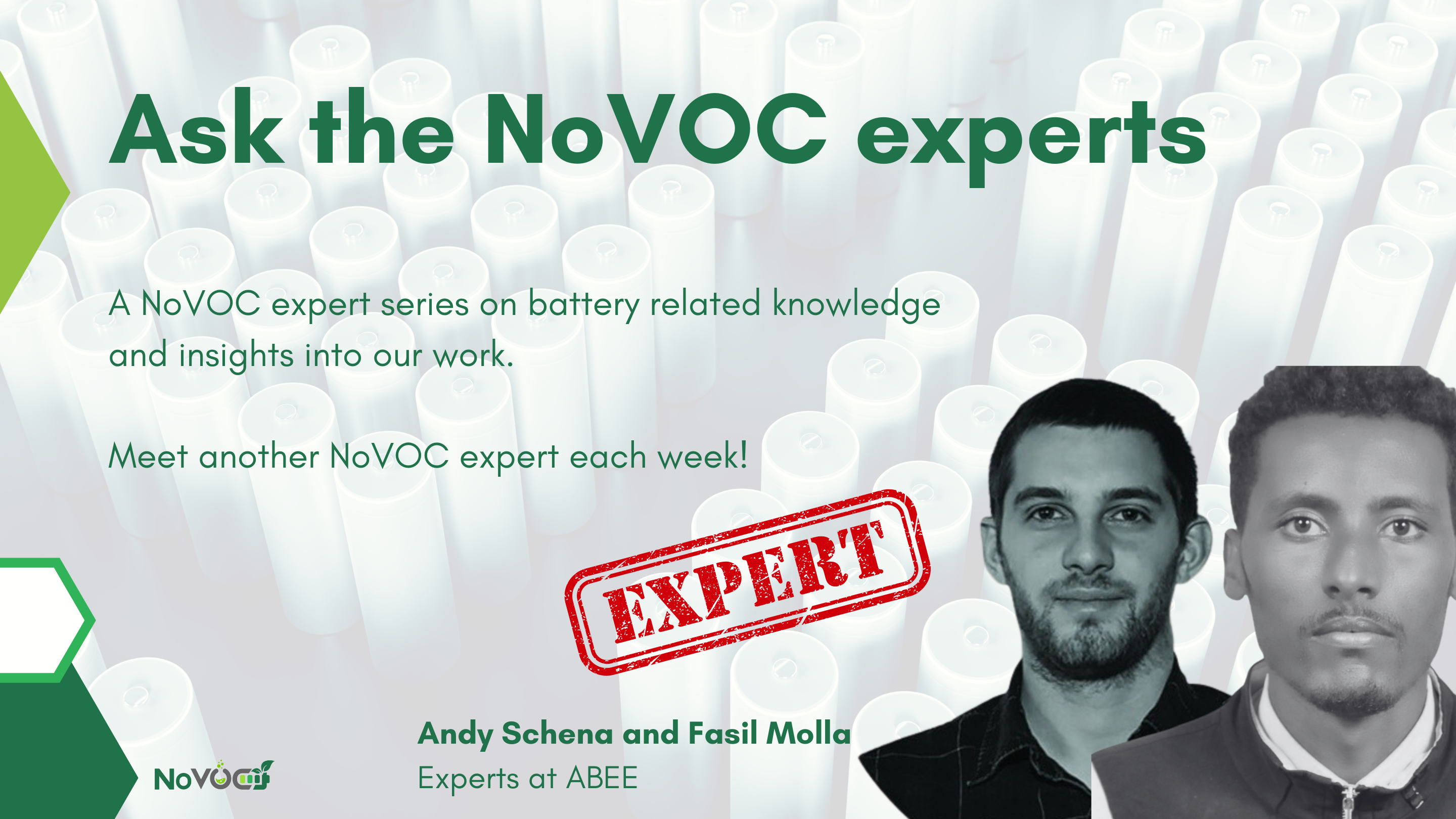
NoVOC “Ask the expert” series with Andy Schena and Fasil Molla from ABEE
How do you scale up a lab-scale battery process to a pilot line?
Scaling up a lab-scale battery process to a pilot line is a crucial step in bringing innovative battery manufacturing techniques closer to industrial production.
In the laboratory, processes are optimized on a small scale, often in coin or small pouch cells.
Transitioning to a pilot-scale production line requires adapting formulations, optimizing processing parameters, ensuring reproducibility, and testing the impact of new techniques on larger battery formats.
Key steps include material validation, ensuring the electrode formulations are stable and scalable, optimizing mixing and coating processes, and addressing manufacturing challenges like electrode adhesion, drying conditions, and layer uniformity.
Additionally, automation and process control become essential to ensure consistency in large-scale production, which is not always a concern at the lab scale.
In the NoVOC project, ABEE (Avesta Battery & Energy Engineering) plays a critical role in this scale-up process. ABEE is responsible for transitioning aqueous electrode manufacturing from lab-scale to pilot-scale and demonstrating the large-scale production of pouch cells.
This means ABEE is developing pilot-line-compatible coatings, slurries, and drying processes that eliminate volatile organic compounds (VOCs), ensuring the process remains environmentally friendly. By working alongside other partners, ABEE ensures that NoVOC’s innovative solvent-free methods can be translated into practical, industry-ready battery manufacturing techniques.


